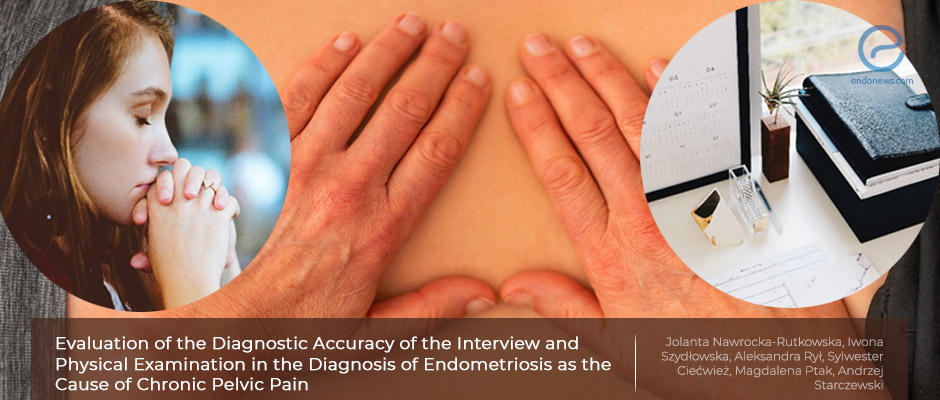The role of physical examination and interview in Endometriosis Diagnosis
Sep 17, 2021
Can physical examination and interview steal a role from surgery in the diagnosis of endometriosis?
Key Points
Highlights:
- Specific interviews and appropriate physical examinations will increase the accuracy of endometriosis diagnosis among women with chronic pelvic pain.
Importance:
- Among women with chronic pelvic pain and endometriosis-suggestive symptoms, endometriosis diagnosis is possible only in one-third.
- Pain that intensifies during menstruation is highly predictive of the diagnosis.
- Laparoscopy and histopathologic confirmation of the disease still remains the primary diagnostic and therapeutic method.
What's done here:
- The study included 148 reproductive age patients with chronic pelvic pain, who had at least one symptom suggesting endometriosis.
- Patients with chronic cystitis, gastrointestinal system-sacro lumbar spine, or another known gynecologic disease were excluded.
- Demographic characteristics, symptoms, operative and postoperative outcomes were recorded.
- During laparoscopy, the number and location of the lesion(s), and presence of adhesion were evaluated, and all gynecologic organs were assessed.
Key Results:
- Laparoscopic surgery revealed endometriosis in 54 (36%) patients and isolated adhesions were found in 44 (30%).
- Patients with and without a history of previous surgery reveal that adhesions are significantly more common in patients with surgery history.
- Exaggerated symptoms during menstruation and infertility had the highest sensitivity for endometriosis detection (89% and 75%).
- The irregular menstrual period had the highest specificity and positive predictive value for endometriosis diagnosis (78% and 85%, respectively).
- Nodular lesions in the posterior vaginal fornix and thickened sacro-uterine ligaments had the highest negative predictive value for the diagnosis of endometriosis (99% and 98%).
Limitations:
- The present study did not focus on the interval between the symptoms and the diagnosis of endometriosis.
- A relatively small patient number was included and all data were from a single-center.
- The symptoms may differ over time which might affect the results, hence long term follow-up may be necessary.
Lay Summary
Today we know that the most accurate diagnosis of endometriosis necessitates surgery and histopathological examination of the excised lesions. However, many women are misdiagnosed due to various symptoms of endometriosis which mystify gastrointestinal, urinary, and musculoskeletal diseases.
Nawrocka-Rutkowska and colleagues investigated the importance and accuracy of interview and physical examination for the diagnosis of endometriosis. The results were recently published in the "International Journal of Environmental Research and Public Health".
The authors analyzed data from 148 patients who underwent laparoscopic surgery for chronic pelvic pain, and found that isolated adhesions, adhesions and endometriosis, and isolated endometriosis were significantly common in patients with surgery history.
Also, the authors stated that the pain which intensifies during menstruation and infertility had the highest sensitivity for endometriosis, and irregular menstrual period had the highest specificity and positive predictive value for endometriosis.
Moreover, nodular lesions in the posterior vaginal fornix and thickened sacro-uterine ligaments had the highest negative predictive value for the diagnosis of endometriosis.
Finally, Nawrocka-Rutkowska and colleagues emphasized that symptoms and physical examinations provide important but limited information in the diagnosis of endometriosis which should be supported with studies that include a higher number of patients and symptom types.
Research Source: https://pubmed.ncbi.nlm.nih.gov/34205332/
physical examination endometriosis diagnosis adhesions accuracy sensitivity specificity PPV NPV

